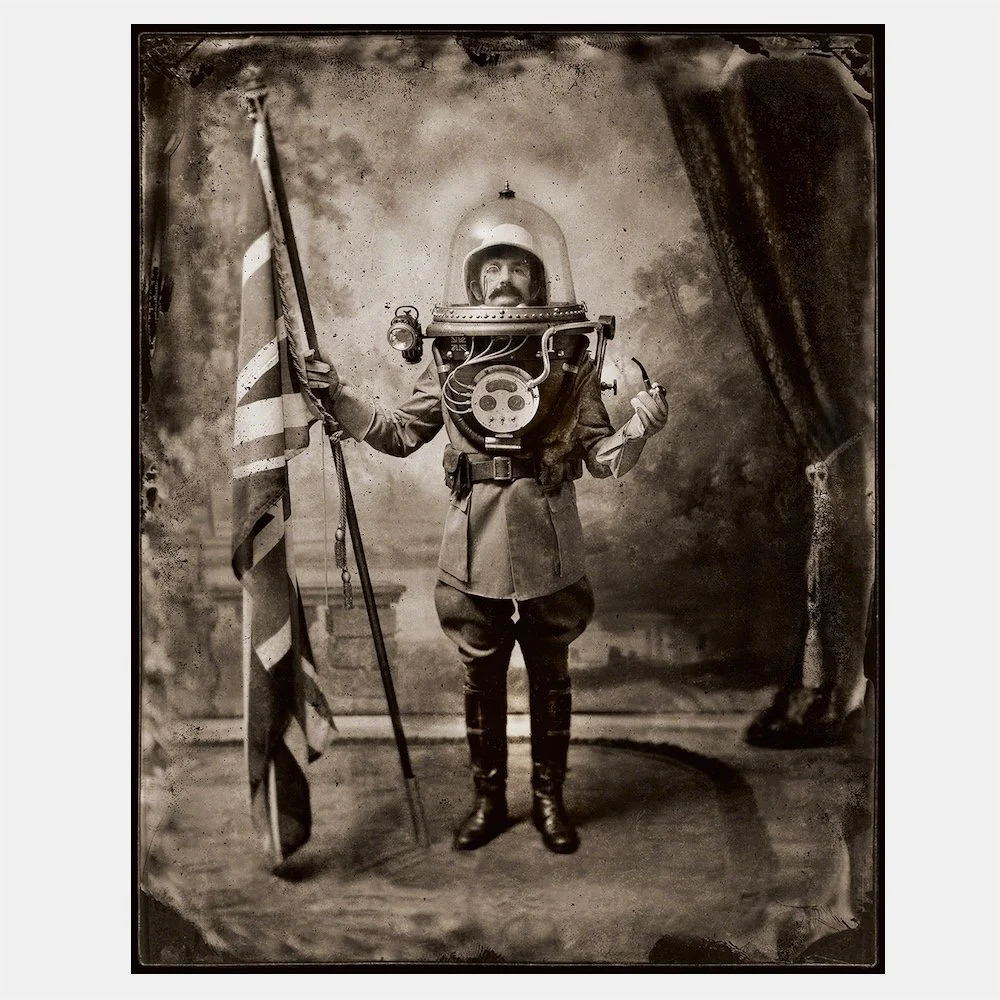Home > Shop > Nick Simpson
Nick Simpson
Nick Simpson was born in 1962 and brought up in picturesque rural Lincolnshire, England.
After leaving school, he spent a short time working on a pig farm before moving to London to pursue a career as a photographer. During this time, he additionally gained extensive experience in a variety of different creative categories, including art direction, set and lighting design, and fine art printing. He eventually built a reputation within the advertising industry as an imaginative photographic maverick, and worked with some of the capital's leading agencies on some of the world's biggest brands.
He has also written, directed and produced a number of commercials, documentaries and short films.
In the spring of 2012, Nick gave up the commercial world in order to concentrate exclusively on a career in fine art.
ARTIST’S STATEMENT
“My art expresses a fascination with stories steeped in the bizarre, the exotic and the fantastic. Stories are told with an eclectic collection of visual clues, fictional objects, artefacts and curiosities. These clues all cause the narrative to hover between the real and the imaginary. Often an accompanying text seems to add further detail, but this is merely there to garnish a much deeper story. By careful planning, these richly detailed photographic tableaux are devised to invite the viewer to at first question, and then piece together their own version of the whole story.
In this body of work; ' The Bumforth Manor Collection ' I present a collection of photographs as though recently discovered in the attic of an imaginary long-deceased relative, my great grandfather, the 19th century eccentric and photographic pioneer, Samuel Heracles Gascoigne-Simpson (b.1839 d.1910).
I have borrowed heavily from the Victorians using cues and objects seemingly from that era. The resulting images highlight a shared obsession with the unusual and the obscure, the dark and the inexplicable. Often cloaked in humorous melodrama, these tales are created to exploit ironic notions such as colonialism, pomp, morality and the unstoppable march of progress.
The apparatus I have chosen to use to create these works;– an original 1867 Petzval lens mated to a full-plate mahogany view camera of similar vintage, further immerses us into the world of Victorian salon photography. It provides an authenticity that connects the process with the final artwork.
I construct from scratch, shoot all scenes in-camera and the resulting original picture is usually made in a single sitting on one photographic plate. Everything incorporated within my artwork is real, even if incongruous or unexpected, and often elements are fabricated purely for the picture. Hand painting, scratching and distressing add a patina to the plates, giving the illusion of historical provenance and adding further credibility to the suggestion that the picture really might be a genuine 19th century artefact. The edges of fact and fiction are twisted and blurred within this credible historical framework, allowing the viewer to create their own personal concept of what story lies within.”










Limited Edition Signed and Numbered Giclee Print
Size Framed: 860mm x 740mm
Additional notes:
Lord Darlington was a wealthy industrialist and Philanthropist, owning both coal mines and industrial engineering companies in the North East of England.
In 1900 he designed a magnificent walking machine in order to advertise the expertise of his engineering company and foundry.
In 1902 Samuel Heracles Gascoigne-Simpson was invited to County Durham
to witness and record the spectacle of the first steaming and maiden run of Lord
Darlington's magnificent folly, ‘The Astonishing Steam Rhinomotive’.
A low bass rumble deep from within its bowels threatens to dislodge the very
windows from the surrounding houses; boilers gurgle, gears clank and steam jets
forth; filling the street with clouds of ungodly vaporous mist. Then - in a deafening
crescendo of protesting shuddering metal - gears reluctantly engage and the
magnificent iron beast lurches forward, its master at the helm the only thing
preventing total destruction of everything in its path.
(Eye witness account, Durham Chronicle October 1902)